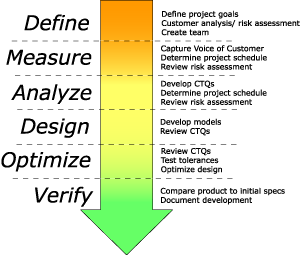FMEA is designed to assist the engineer improve the quality and reliability of design. Properly used the FMEA provides the engineer several benefits. Among others, these benefits include:
* Improve product/process reliability and quality
* Increase customer satisfaction
* Early identification and elimination of potential product/process failure modes
* Prioritize product/process deficiencies
* Capture engineering/organization knowledge
* Emphasizes problem prevention
* Documents risk and actions taken to reduce risk
* Provide focus for improved testing and development
* Minimizes late changes and associated cost
* Catalyst for teamwork and idea exchange between functions
* Improve product/process reliability and quality
* Increase customer satisfaction
* Early identification and elimination of potential product/process failure modes
* Prioritize product/process deficiencies
* Capture engineering/organization knowledge
* Emphasizes problem prevention
* Documents risk and actions taken to reduce risk
* Provide focus for improved testing and development
* Minimizes late changes and associated cost
* Catalyst for teamwork and idea exchange between functions




